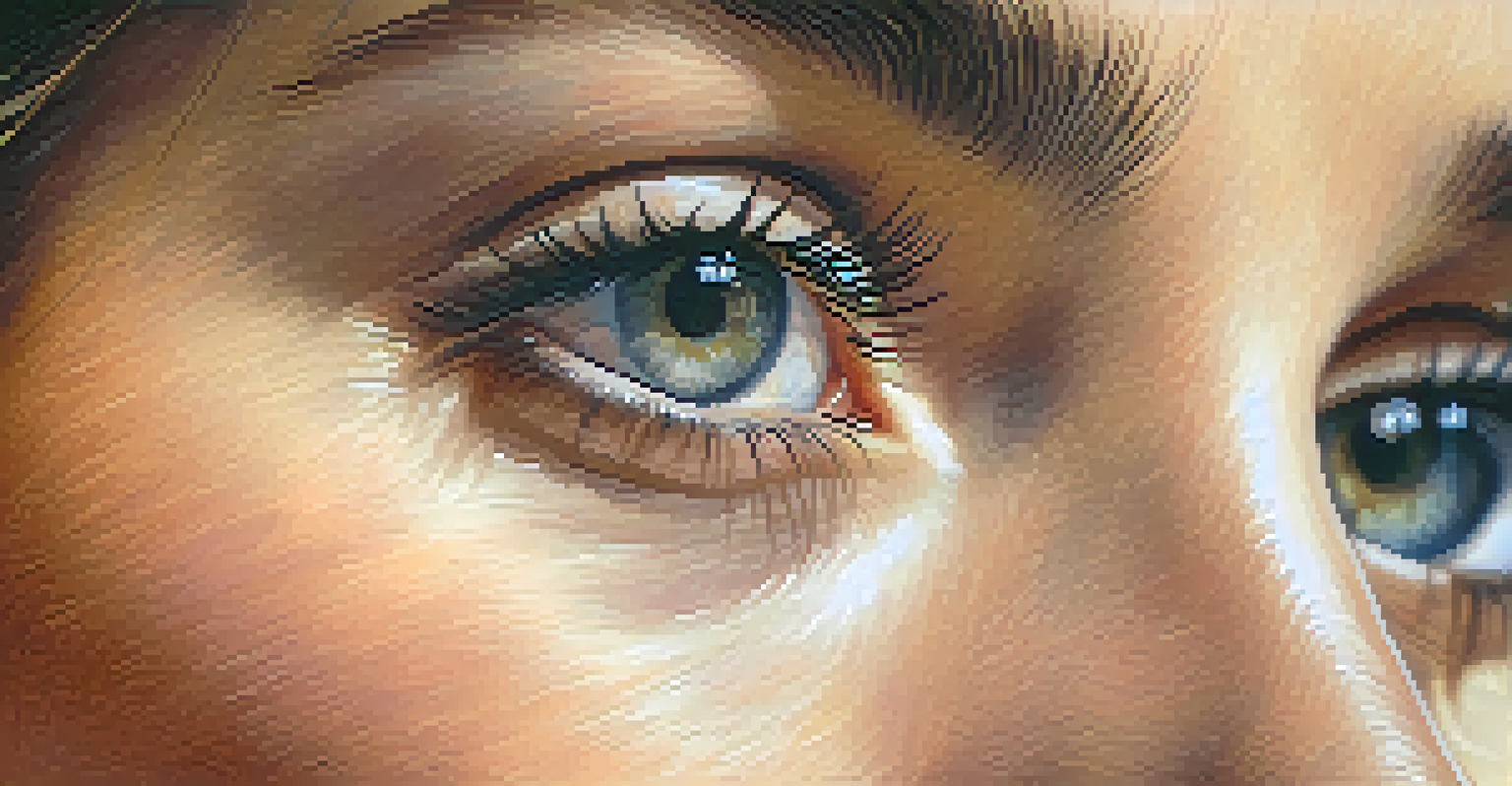The Impact of Camera Angles on Film Narrative and Emotion

Understanding Camera Angles in Film
Camera angles are the positions from which scenes are shot, and they play a crucial role in storytelling. By altering the perspective, filmmakers can evoke different emotions and guide audience interpretation. For instance, a low-angle shot can make a character seem powerful, while a high-angle shot may suggest vulnerability.
The camera is a device that teaches you how to see without a camera.
These angles can also establish the mood of a scene, influencing how viewers feel about the characters and events unfolding. A close-up can create intimacy, drawing viewers closer to a character's emotions, while a wide shot might evoke feelings of isolation. Understanding these dynamics is key for both filmmakers and audiences alike.
In essence, camera angles are not just technical choices; they are narrative tools that shape how stories are perceived. By mastering the art of camera positioning, filmmakers can enhance the emotional resonance of their narratives, making every shot count.
The Role of Framing in Establishing Context
Framing refers to how subjects are composed within the camera's view, and it significantly contributes to the narrative. A well-framed shot can provide context and guide the viewer's focus, highlighting important elements or emotions. For example, placing a character at the edge of the frame can suggest loneliness or impending danger.

Moreover, framing can influence how relationships between characters are perceived. When two characters are shot close together in a frame, it may suggest intimacy, while distancing them can indicate conflict or separation. This visual strategy allows filmmakers to convey complex emotional states without relying solely on dialogue.
Camera Angles Shape Perception
The choice of camera angles can evoke powerful emotions and influence how audiences perceive characters and their situations.
In short, effective framing is essential for storytelling, as it not only sets the scene but also enriches the viewer's understanding of character dynamics and narrative themes.
How High and Low Angles Affect Perception
High and low angles are powerful tools that can significantly alter audience perception of characters. A high-angle shot looks down on a subject, often making them appear weaker or more vulnerable. This technique can evoke sympathy from the audience, as seen in many dramatic scenes where a character faces overwhelming odds.
A picture is worth a thousand words, but a well-framed shot can capture a world of emotions.
On the flip side, low-angle shots create a sense of power or authority, making characters appear larger-than-life. This perspective is commonly used for heroes or villains, enhancing their presence on screen. For instance, when a protagonist stands tall against adversity, a low-angle shot can elevate their heroic status.
By carefully choosing high or low angles, filmmakers can manipulate how viewers feel about characters, guiding emotional responses and shaping the narrative.
The Emotional Impact of Close-Ups
Close-ups are one of the most effective ways to convey emotion in film. By zooming in on a character's face, filmmakers can capture subtle expressions that communicate feelings without words. This technique is particularly powerful in moments of tension or vulnerability, where the audience can connect deeply with the character's inner turmoil.
For example, in a romantic scene, a close-up of a character's eyes can reveal longing or desire, drawing viewers into the emotional experience. This intimacy can make audiences feel as if they are sharing the moment with the character, enhancing emotional engagement.
Framing Guides Viewer Focus
Effective framing highlights important elements and emotions, shaping the viewer's understanding of character dynamics.
Ultimately, close-ups serve as a bridge between the character's internal world and the audience's emotional response, making them a vital component of film narrative.
The Power of Wide Shots in Storytelling
Wide shots are often used to establish the setting and context of a scene, providing a broader view of the environment. This perspective can set the tone for the narrative, whether it's a bustling cityscape or a desolate landscape. By showcasing the surroundings, filmmakers can influence how viewers interpret the characters' experiences within that space.
In addition to context, wide shots can emphasize isolation or connection among characters. For instance, a wide shot of a lone figure in an expansive landscape highlights their solitude, evoking feelings of loneliness. Conversely, a group of characters huddled together in a wide shot can convey camaraderie and unity.
Thus, wide shots not only serve a practical function but are also instrumental in conveying emotional themes within the narrative.
Using Camera Movement to Enhance Emotion
Camera movement can amplify emotional experiences in film, adding a dynamic layer to storytelling. Techniques like panning, tilting, or tracking shots can create a sense of urgency or tension, drawing viewers deeper into the action. For example, a shaky handheld camera during a chase scene can evoke adrenaline and excitement, immersing the audience in the moment.
Conversely, slow, smooth camera movements can create a reflective atmosphere, allowing viewers to absorb the emotional weight of a scene. A slow zoom in on a character during a poignant moment can heighten the impact of their emotional state, making the audience feel their pain or joy more intensely.
Close-Ups Foster Emotional Connection
Close-up shots capture subtle expressions, allowing audiences to connect deeply with a character's emotional journey.
In essence, camera movement is a vital storytelling device that can manipulate pacing and emotion, enhancing the overall narrative experience.
The Significance of Angle and Lighting Combination
Combining camera angles with lighting choices can dramatically alter the emotional tone of a scene. For instance, a low-angle shot paired with harsh, dramatic lighting can create a sense of foreboding, emphasizing a character's menacing presence. This combination helps to reinforce the narrative's mood and themes.
On the other hand, soft lighting with high-angle shots can evoke feelings of warmth and safety, making characters appear more relatable and approachable. This technique is often used in romantic comedies or heartwarming dramas to create a comforting atmosphere.

By thoughtfully combining camera angles and lighting, filmmakers can craft intricate emotional landscapes that resonate deeply with audiences, enhancing the storytelling experience.